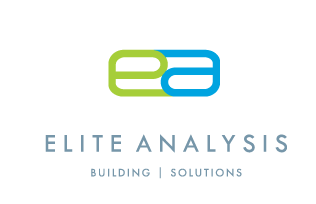Mold is a type of fungus that thrives in moist or damp environments. While outdoor molds are a necessary part of the planet’s ecosystem, since they break down decaying organic matter, such as dead leaves and trees, indoor molds are rarely considered welcome guests. In fact, the opposite is true. Exposure to indoor mold can result in health problems that range from the merely annoying, like itchy eyes and a runny nose, to the deadly serious such as neurological or organ damage. According to the Environmental Protection Agency (EPA) there are from 50 to 100 different types of indoor molds that are hazardous to human health.
 While it is always preferable to prevent mold from growing in indoor spaces in the first place, by keeping moisture to a minimum, sometimes mold will proliferate in unseen areas due to water damage from leaky roofs, ruptured pipes, or especially high humidity. If high levels of mold are observed or suspected, indoor samples should be taken and mold spores tested for toxicity. Once the type and extent of the mold infestation is determined, a plan for remediation and removal will likely become necessary.
While it is always preferable to prevent mold from growing in indoor spaces in the first place, by keeping moisture to a minimum, sometimes mold will proliferate in unseen areas due to water damage from leaky roofs, ruptured pipes, or especially high humidity. If high levels of mold are observed or suspected, indoor samples should be taken and mold spores tested for toxicity. Once the type and extent of the mold infestation is determined, a plan for remediation and removal will likely become necessary.
Mold Remediation
Traditional mold remediation generally consists of eliminating the source of moisture which allowed the mold to grow; cleaning the infected area with various disinfectants or biocides that kill the mold spores; brushing the infected area with a wire brush; utilizing a HEPA filtration system, which will remove airborne mold spores from one to five microns in size; and removing any material that provided a growth environment in which the mold propagated, such as wood, wallpaper, drywall, insulation, carpeting, fabrics, furniture, etc.
Another way in which molds can be remediated is by exposing them to ultraviolet (UV) light. UV light is a radiation that is part of the electromagnetic spectrum and is in the same family as X-rays and gamma rays. Since it is within the C-band of the light spectrum, or beyond the blue end of visible light, UV light cannot be seen by human eyes. Nonetheless, UV light rays can damage living organisms by disrupting the RNA and DNA molecules deep within their cell structures. In fact, it is the ultraviolet part of natural sunlight that is dangerous to human cells, as well, causing sunburn and, if exposure is prolonged, skin cancer. In addition, UV light is harmful to the eyes and the ozone it creates by irradiating the air, is a potent respiratory hazard.
The Problem of Using UV Light to Treat Mold Infestations
So, even though molds can be sterilized by utilizing UV radiation, there are several reasons why it is not the preferred method of mold removal recommended by many professional remediation specialists. The first, of course, is that, as already explained, UV light is dangerous to all living things. But potential harm to humans and pets is not the only reason that attempting to kill household mold with UV light is not the attractive, cutting edge technology that some claim.
While it is true that UV light has been used in hospital settings and in the HVAC systems of large public buildings for years in order to control germs and prevent mold from growing, using it to kill mold that is already present in the home is much more problematic. One reason is because UV light only works if it is held one to two inches from the affected surface. As the distance from the mold infestation increases, the intensity of the light decreases, weakening its disruptive properties. If the mold is farther away than can be reached by the light, there is a chance that it simply won’t completely eradicate the colony.
In addition, even if the process, when done correctly, could kill upwards of 99 percent of the mold, it still may leave enough spores alive, and they will continue to reproduce in the colonized, but supposedly treated area. Finally, even if radiation is effective in killing all of the most dangerous and commonly-found indoor molds, it will not destroy their spores, which do not actually need to be alive to cause an allergic reaction. So, the bottom line is: UV light will not generally provide a satisfactory remediation if used alone, and can only be considered an effective agent of mold removal when used in conjunction with other mold remediation protocols.
Use Inside An Air Handler
While the science behind UV light killing mold is fairly agreed upon, the amount of air flow over a small UV light in your air handler will have little to no effect, and is most definitely a waste of money.
If You Do Use UV Light
However, if you do attempt to use UV light to eradicate household mold, you must observe these safety precautions: Refrain from looking directly at the light fixture unless you are wearing UV protective glasses – regular sunglasses will not protect your eyes from the UV rays. Also, wear gloves while handling UV light fixtures as, like with any lamp, the bulb will become hot. Lastly, do not leave the light on when other people are in the room as accidental contact with UV radiation is dangerous to exposed skin.
[maxbutton id=”3″]
